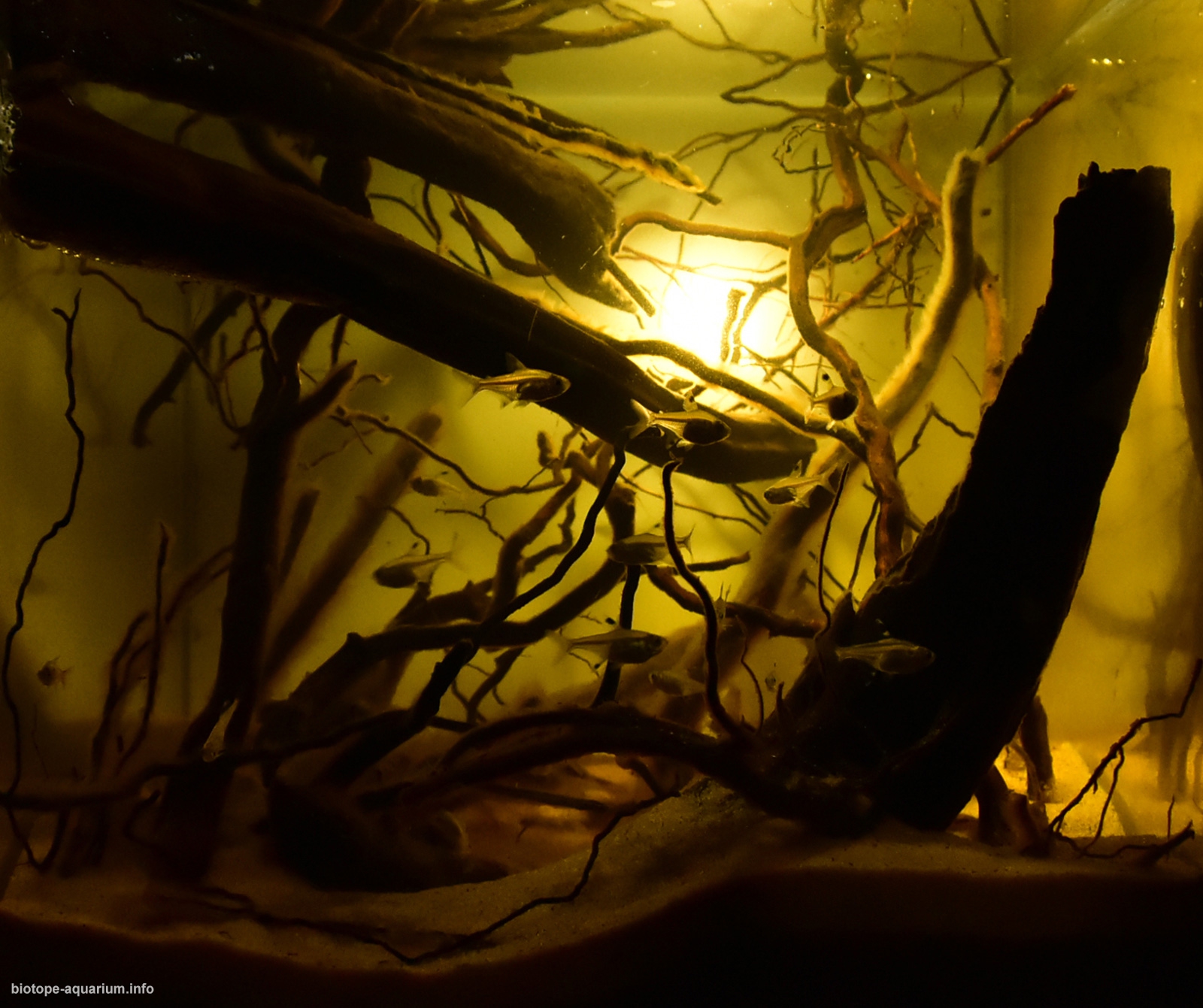Rio Caroni, Orinoco tributary, Venezuela
97th place in Biotope Aquarium Design Contest 2018
![]() China. Wang Peng
China. Wang Peng

Volume: 27 L
Dimensions: 30x30x30 cm
List of fishes: Pristella maxillaris
List of plants: N/A
Description of decorations: River sand, drift wood, Origin in China.
Description of equipment: Built in filter JP-012F 300L/h
LED 20W 6000K/ LED 10W 3000K.
Water parameters: water temperature 26℃, Water color yellow, PH is 6.5, GH is 25.
INFORMATION ABOUT BIOTOPE
Description of the area surrounding the biotope: river in the southern part of Venezuela. The Caroni River, the largest tributary on the lower right bank of the Orinoco River, rises near Alabobo in Mount Roraima (2810 meters above sea level) on the Venezuelan-Brazilian border and flows into the Orinoco River near Ordaz, 920 km in length and has a catchment area of 95,000 square kilometers. There are 2 streams in Heyuan: the Kukenan (Cuquenan) River and the Apongua O (Aponguao) river. The main tributaries in the upper reaches are Ilkka Balu (Icabaru) river. The watershed is sparsely populated and belongs to the subtropical and Savannah type. The forest vegetation is luxuriant. The area of 62,500 square kilometers is covered by primitive forests, accounting for 2/3 of the watershed area. The basin has abundant rainfall, with an average annual rainfall of 2 000 mm and a maximum of 2,923 mm. The average annual flow of the river is 5,000 cubic meters per second, the annual runoff depth is 1,700 mm, the suspended load concentration is 0.005 kg/cubic meter, and the annual sediment transport is 2 million tons. The middle and lower reaches of the Carroni River are joined by two larger tributaries: the Carrao and Paragua rivers, of which the Angel Falls on the Cullen, the tributary of the Karao, are the world’s most fallen, with a fall of 979 meters; the Paragua and the Curutu, Vinebona and Asa rivers are also joined. Equal tributaries.
Description of the underwater landscape of the biotope: In the rainy season, the carolone river has plenty of rain, and the river is rising, bringing a lot of sediment and turbidity. With the arrival of the rainy season, the river flooded the forest, the deepest up to 10-12 meters, the bottom of the river is sandy, no water grass found, there are a lot of branches and floating trees in the water.
Description of the parameters of the habitat: April-October is the flood season, the river is slightly turbid, the annual average temperature of 26-28 degrees Celsius, dry season temperature of 28 degrees Celsius, rainy season temperature of 22 degrees Celsius. PH value is about 6.2-6.5 in dry season, TDS value is 50-70, pH value is about 6.5-7 in rainy season and TDS value is around 20.
List of fishes and invertebrates occurring in the nature biotope: Pterophyllum aitum,Poecilia reticulata,Pristella maxillaris. In my original landscaping, I chose Pristella maxillaris.
List of plants found in the nature biotope: Echinodorus amazonicus Rataj, Lemna minor.
Threats to the ecology: Nature has created man, but man has returned to nature in the way of destruction. In the ecological environment, the deforestation of forests and the abandonment of wild fish have seriously destroyed the balance of the natural environment.
Sources of information:
http://m.qpic.cn/psb?/
http://tv.cctv.com/2018/05/14/
